From the early 1960s through the early 80s, Soen Nakagawa, who had been influential in the training of such early American Zen students as Philip Kapleau and Robert Aitken, began to come regularly to the States to lead sesshins, or sitting retreats, when his responsibilities as abbot of Ryutakuji Monastery in Japan would allow it. Soen Roshi, as his American students called him, was famed for his unconventional teaching methods, which were eccentric even by Zen standards. One often-reported trick was the time he placed a pumpkin on his sitting cushion in the interview room during sesshin. He then called participants in for private interviews and hid behind a screen, watching while the baffled students did their customary prostrations before the impassive gourd. Or he might don a mask and appear out of nowhere, then drop it to pronounce: “I’ve taken off my mask. When will you take off yours?”
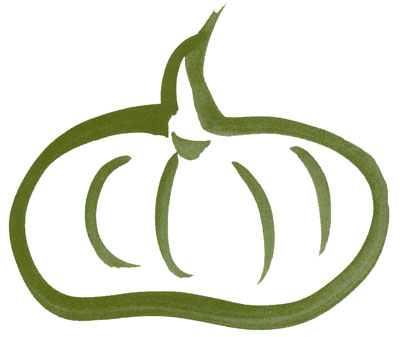
Soen loved to walk around New York City. He’d stare at the lighted skyscrapers; at their tops, he claimed, he saw Buddha figures in the lights. “Look at the Buddha,” he’d point, “Shining Buddha!” He’d fill the sleeves of his robes with nuts and berries from Central Park, or herbs he found growing in the sidewalk cracks, and add them to his bowl at the next meal. He loved the musical Fiddler on the Roof, and when asked a question about why some particular point of ceremony needed to be performed in a certain way, he might burst into song, responding: “Tradition…!”
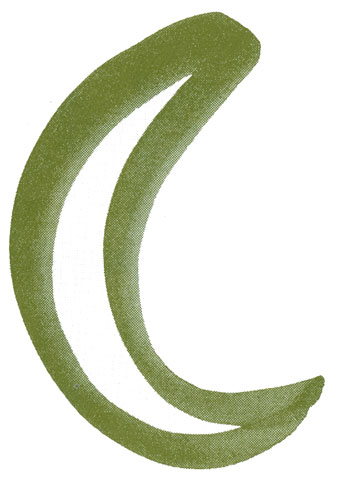
Soen even made up a new koan in response to the Apollo missions: “Without getting in a spaceship, bring me a rock from the moon.” It is not known if any of his students ever managed to pass it.
Despite being the abbot of a major temple, Soen Roshi had an uneasy relationship with traditional forms, and had earned a reputation as an eccentric even in Japan. Soen was also known for his love of green tea, powdered and whisked in the traditional fashion, and he would sit down anywhere, if the mood struck him, to conduct an impromptu tea ceremony. He claimed that once, on a visit to Israel, he’d floated, unsinkable, on the surface of the Dead Sea, serving tea to a group of friends. In an airport one of his students asked if Roshi might conduct a tea ceremony; in answer he extracted a tin from his sleeve, dipped his finger into it, and instructed the student to open her mouth.
“There,” he announced, dabbing a fingertip of powdered green tea onto her tongue. “Now you make the water!”
On another occasion, at Dai Bosatsu Monastery in upstate New York, Soen met a student who had just returned from studying tea in Japan. He asked her to perform a ceremony for him, but the student protested that she did not have her supplies. The Roshi must have persisted in his request, for a short while later the two were seen sitting on the dock at the edge of Beecher Lake, pouring nonexistent tea into nonexistent bowls and sipping at them, in a perfect pantomime of the formal ceremony.
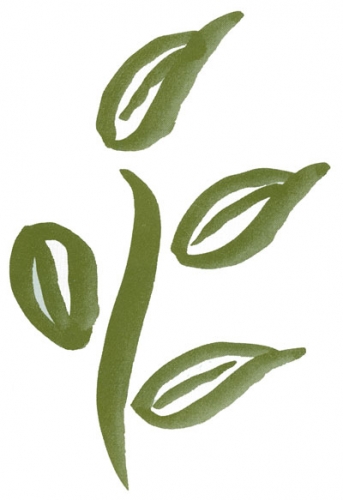
Once Soen invited the teachers from the New York branch of a prominent tea school to have tea at his New York Zendo—a great honor for them, considering that he was abbot of an important temple. Soen Roshi proceeded to conduct a traditional ceremony, flawless in every detail but for one: with characteristic wry humor, what he whisked into their bowls was not green tea, but instant coffee.
Does a Dog Have Buddha Nature?
American writer Wendy Johnson, a longtime resident of Green Gulch Farm Zen Center in California, remembers a retreat she attended with Soen Roshi at a Trappist Monastery on the outskirts of Jerusalem in the early 70s. The group included a rabbi, an Israeli draft resister, and a number of Americans, as well as a number of other participants from orthodox Jewish and Christian backgrounds. One evening Soen found the evening chanting service to be rather spiritless, so he ordered all present to meet him outside after the final sitting period. He proceeded to take them on a long walk through the darkened hills.
The monastery was in the country just outside Jerusalem, surrounded by Arab villages, and at the time, shortly after the Six Day War, it wasn’t considered advisable to wander about the countryside. Still, Soen led the group off into the darkness, loudly chanting the Kannon Sutra. At one point they rounded a bend and found the whole valley spread out below them. Calling the group to a halt, Soen Roshi demanded, “What is the true nature of mind?” He answered himself: “MU is the true nature of mind!” (MU literally means “no,” “nothing,” or “emptiness,” but refers to the koan in which a monk asks Joshu, “Does a dog have Buddha nature?” and Joshu replies: “MU!”)
Soen admonished the group to chant MU until their small selves fell away. They chanted with such ferocity that the tears ran down their faces. Soen’s booming baritone voice, strikingly loud for his tiny Japanese frame, rang out as loudly as the rest. And as they stood there, shouting MU at the top of their lungs in the dead of night, the dogs of the surrounding villages began to join in, yapping and baying in a wild cacophony of affirmation—as though they, at least, knew the answer.
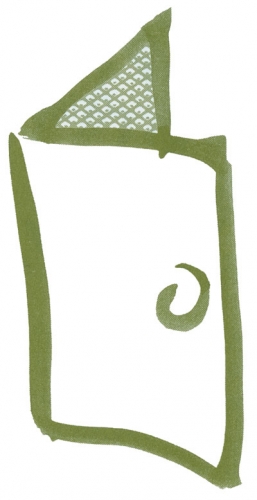 Nobody Home
Nobody Home
Soen Roshi used to tell the story of how in London, as he was about to enter a bathroom, someone informed him it was occupied. As Zen teacher and author Peter Matthiessen tells it in his book Nine-Headed Dragon River:
The roshi waited there politely for a long time before he became concerned, after which he knocked, then opened the door.
“Nobody there!” he laughed delightedly. “Wait as long as you like! Never anybody there! From the beginning!”
Shaking Hands with Essence
On a visit to Israel, Soen Nakagawa Roshi called upon the Jewish philosopher Martin Buber.
During the conversation, Soen Roshi’s American traveling companion remarked, “There are many religions: Christianity, Buddhism, Judaism—but the essence is the same.”
“Where is essence?” responded Buber.
“Let us shake hands with essence,” replied Soen Roshi, extending his hand. “Okay?”
At this Buber laughed heartily.
Wonderful Costumes
One evening Soen Nakagawa was invited to a gathering at the home of aikido master Harvey Konig, in New York. On entering Konig’s home, Soen paused before a painting Konig had done of his healing arts teacher, who’d been an important mentor to him. “There’s something incomplete about this,” Soen said.
As it turned out, Konig’s teacher had recently died, and Konig had been unable to attend the funeral. On hearing the story, Soen Roshi improvised a memorial service on the spot, an event Konig found extremely moving.
 Afterward, to shift the mood, Soen Roshi began randomly opening closets; inside he found a variety of martial arts attire and various other articles of clothing. “Ah!” exclaimed Soen. “Wonderful! Costumes!” He began pulling out items and handing them to the other guests, and within a short time had created an impromptu costume party.
Afterward, to shift the mood, Soen Roshi began randomly opening closets; inside he found a variety of martial arts attire and various other articles of clothing. “Ah!” exclaimed Soen. “Wonderful! Costumes!” He began pulling out items and handing them to the other guests, and within a short time had created an impromptu costume party.
Later a shakuhachi flute master, a friend of Soen who was also in attendance, announced that since Konig seemed to have a lot of pets about, he was going to perform a special piece written for animals. No sooner had he begun to play, reports Konig, than cats and dogs began to filter into the room from all over the house. Ignoring the assembled human beings, they padded into the room and sat silently down, appearing to listen. After the piece was finished, he began a different one. At this the animals wandered off and went back to their business, and the celebration went on.
Just another evening with Soen Roshi!
Dharma Words from Soen Roshi
Most people think that we live in the actual world while we are alive, and that after we take the last breath we somehow wander into a vague realm of the spirit. It is a great mistake to see two separate realms. Instead, where we live is in fact the spiritual realm, a realm of many billion worlds, which goes beyond three, four, or even infinite dimensions. Then the danger is that we might think that this is a realm that is empty and boundless. Watch out! It’s all manifested right here at this moment. It is alive and kicking!
There is a wonderful Buddha statue at the Metropolitan Museum. There are national-treasure bodhisattvas and many statues. They are wonderful, of course . . . But, you are livingbodhisattvas, each of you, living! Not bronze or wood. Sometime, something bad may happen. “Oh, I will pray to Buddha.” No, no, no! There is no such Buddha. Realize this and every human being becomes wonderful . . . Open your own eyes! . . . Don’t think, “Oh, I am not yet enlightened. Some day I’ll get enlightenment.” From today, forget such! From the beginning, we are the Enlightened One. Believe this with definite faith . . . . So with this mind, please, let us bow to each other . . .
Without exception, each of you is a living Buddha . . . Without exception, okay?
—From a talk at International Dai Bosatsu Monastery, New York, 1982
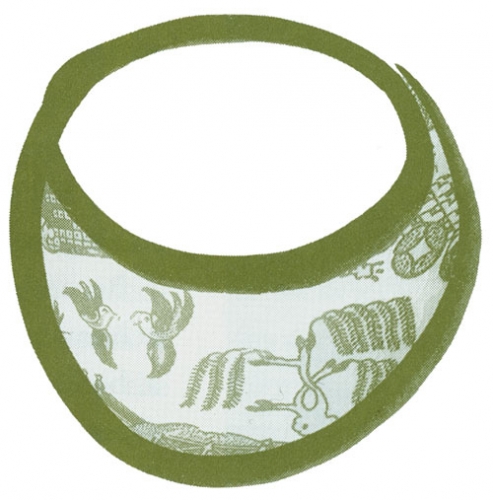
In the late 1960s Soen Roshi sustained a head injury, which some say was caused by falling out of a tree in which he’d been meditating—an event often pointed to as the cause of his increasingly eccentric behavior. It is said that he suffered from pain at various times in his life, but this worsened in his later years to the point where, in the late 1970s, he shut himself away in his quarters at his Japanese monastery, grew his hair and beard long, and refused to see anyone.
Soen Roshi came out of his self-imposed retirement in 1982 to pay a last visit to his American students. As Peter Matthiessen reports it, he left them with these words:
Cooking, eating, sleeping, every deed of everyday life is nothing else than this Great Matter. Realize this! So we extend tender care with a worshipping heart even to such beings as beasts and birds—but not only to beasts, not only to birds, but to insects too, okay? Even to grass, to one blade of grass, even to dust, to one speck of dust. Sometimes I bow to the dust…
Soen Roshi died at Ryutakuji Monastery in Japan in 1984; half of his bones are buried there, and half in America. ▼
Thank you for subscribing to Tricycle! As a nonprofit, we depend on readers like you to keep Buddhist teachings and practices widely available.